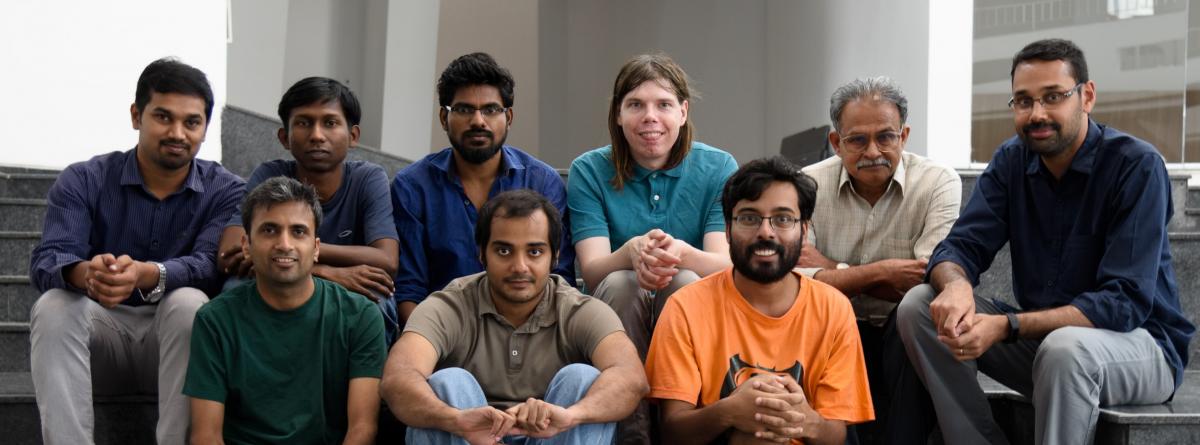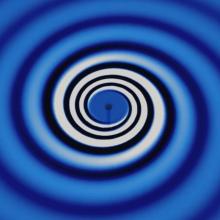Firmly transiting into the era of Gravitational Wave Astronomy
The Laser Interferometer Gravitational-wave Observatory (LIGO) has made another successful detection of gravitational waves, ripples in space and time, from the merger of two massive black holes that happened three billion light years away. This firmly reiterates the remarkable launch, announced last year, of a new window of astronomy.
The new detection occurred during the ongoing second observing run of the Advanced LIGO detectors in the USA, which began on November 30, 2016. The first direct observation of gravitational waves was made in September 2015 during the first observing run. A second detection was made in in December 2015. The third detection, made on January 4, 2017, is described in a new paper accepted for publication in the journal Physical Review Letters. These detections were made possible by contributions from more than thousand researchers from many different countries, setting a great example in collaborative science. Indian scientists have done foundational work over the last three decades in modelling the signal waveforms and developing mathematical techniques to search for gravitational wave signals in noisy data. A new generation of Indian scientists are expanding these contributions on several other frontiers. The publication has 40 authors from 11 Indian institutions.
The third event was produced by the merger of two black holes, 31 and 19 times as massive as the Sun, forming a larger black hole of about 49 solar masses. Also, the data suggests that at least one of the black holes in this binary system might have been spinning in a direction that is not completely aligned with the orbital rotation of the binary, providing potential clues on how these binaries might have formed. The new event also provides new opportunities to test Einstein’s theory of general relativity. For example, this allowed us to confirm Einstein’s prediction that gravitational waves should not undergo ‘dispersion’ -- the phenomena of waves traveling at different speeds depending on their wavelength. Indian scientists played a leading role in deriving this result.
Indian scientists contributed to developing and carrying out tests of Einstein’s theory using this event, to the estimation of the properties of the remnant black hole, and to the search for possible electromagnetic flashes associated with this event. The Cadmium Zinc Telluride Imager (CZTI) on the Indian space observatory AstroSat conducted the most sensitive search for short duration X-ray flashes associated with this event, but did not find anything. When an optical source potentially related to the LIGO event was discovered, the CZTI team joined hands with the international GROWTH collaboration to study it. This India-led study proved that the optical source was not related to this event.
“With the third definite detection of gravitational waves from a coalescing black hole binary, we have discovered a new class of astrophysical sources to test Einstein's theory of general relativity in extreme conditions,” said Bala Iyer, Simons visiting professor at ICTS and the Principal Investigator of the Indian team in LIGO. The ICTS group played a key role in developing and implementing an analysis that was used to test the consistency of the observed signals with general relativity. By combining results from multiple LIGO events, more precise constraints on deviations from the predictions of Einstein’s theory were obtained. “What has opened up is a new precision laboratory. By combining results from the large number of events that LIGO will observe in near future, we will be able to perform stringent tests of Einstein’s theory,” said Parameswaran Ajith, the Principal Investigator of the nine-member ICTS team in LIGO. The team also contributed to the estimation of the mass and spin of the remnant black hole produced by the merger. By studying the masses and other properties of such binaries, future observations will tell us how exactly they are formed in nature.
Meanwhile, the planned LIGO-India observatory, that received in-principle approval from the Union cabinet in February 2016, has made rapid progress towards the plan to join these exciting scientific observations in 2024. LIGO-India will greatly enhance the scientific capabilities of the international network of observatories for astronomy, primarily by enabling precise pointing to the location of the gravitational wave events in the sky. Scientific and engineering teams at IPR Gandhinagar, IUCAA Pune and RRCAT Indore are actively engaged in the pre-construction activities of LIGO-India.
67 scientists from 13 Indian institutions are part of the LIGO Scientific Collaboration, under the umbrella of the Indian Initiative in Gravitational-Wave Observations (IndIGO). The Indian team in LIGO includes scientists from CMI Chennai, ICTS-TIFR Bengaluru, IISER-Kolkata, IISER-Trivandrum, IIT Bombay, IIT Madras, IIT Gandhinagar, IIT Hyderabad IPR Gandhinagar, IUCAA Pune, RRCAT Indore, TIFR Mumbai and UAIR Gandhinagar. Some of the data analysis work were carried out using the high-performance computing facilities at IUCAA Pune and ICTS-TIFR Bengaluru.
LIGO is an international collaboration with members around the globe. Its observations are carried out by twin detectors in the USA — one in Hanford, Washington, and the other in Livingston, Louisiana. LIGO is funded by the National Science Foundation (NSF), and operated by MIT and Caltech, which conceived and built the project. Financial support for the Advanced LIGO project was led by NSF with Germany (Max Planck Society), the U.K. (Science and Technology Facilities Council) and Australia (Australian Research Council) making significant commitments and contributions to the project. More than 1,000 scientists from around the world participate in the effort through the LIGO Scientific Collaboration, which includes the GEO Collaboration. LIGO partners with the Virgo Collaboration, a consortium including 280 additional scientists throughout Europe supported by the Centre National de la Recherche Scientifique (CNRS), the Istituto Nazionale di Fisica Nucleare (INFN), and Nikhef, as well as Virgo’s host institution, the European Gravitational Observatory. Additional partners are listed at: http://ligo.org/partners.php.
The CZT–Imager instrument onboard the AstroSat satellite is built by a consortium of Institutes across India, including TIFR Mumbai, VSSC Thiruvananthapuram, ISAC Bengaluru, IUCAA Pune, SAC Ahmedabad and PRL Ahmedabad. The Indian Space Research Organisation funded, managed and facilitated the project. GROWTH was project funded by the National Science Foundation under Grant No 1545949, and by the corresponding grant from the Science and Engineering Research Board, Department of Science and Technology, India.
Media contact
Anupam Ghosh
International Centre for Theoretical Sciences, Tata Institute of Fundamental Research
Survey No. 151, Shivakote, Hesaraghatta Hobli, Bangalore North 560089, India.
Tel. +91 95917 32794 / +91 80 6730 6054 / +91 80 4653 6054
E-mail: anupam . ghosh @ icts . res . in

The LIGO team at ICTS made several important contributions to deciphering LIGO's discovery of gravitational waves.


